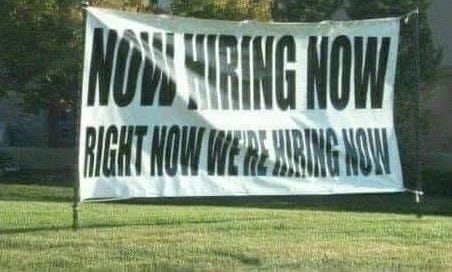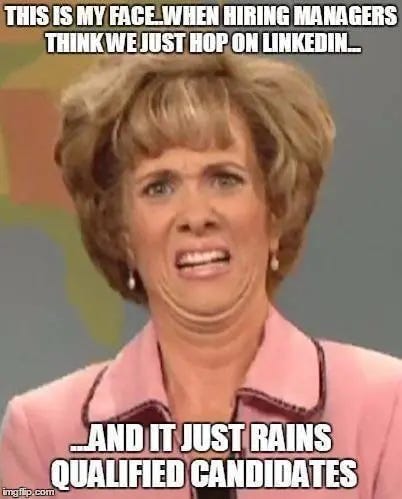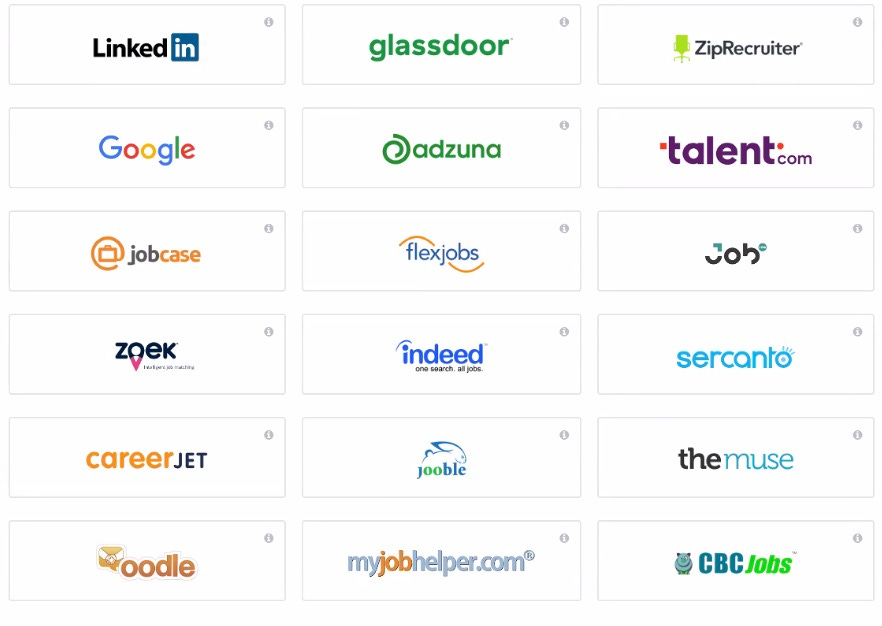Over the last few months we’ve explored business operations and business data that is crucial to your day to day operations. We haven’t talked about the one thing that makes all of that work. No matter the business, it comes down to the people.
Businesses can buy the same software as their competitors, buy and sell the same products from the same suppliers, but they can’t have the same exact employees. The people you bring into your business and culture you create can and should be a competitive advantage. So let’s make sure we’re hiring the best talent for our organization.
Making hiring mistakes can be expensive and unfortunately it’s not possible to hire everyone for a 4 week trial run. Zappos famously offered cash bonuses to people who wanted to leave after going through company orientation. It was a creative way to make sure that the people they hired were in it for the long term success of the business. They had a process in place to make that decision for the company.
Before we get into it, a friendly reminder that we aren’t lawyers, and we don’t play lawyers on TV so please be sure to follow your state and local laws in your job posting, interviewing, and hiring process.
Typical Process
Whether you’re hiring two people a year or dozens of people a month, following a hiring process is important. Following a process has benefits for applicants as well as for the business. Applicants can be informed of what to expect and how long the process takes. The business can see and compare candidates along the way and make a well documented and informed hiring decision.
A well defined hiring process starts with the job posting or job description. Of course candidates need a way to apply from that posting, and then you need to review those applications. Each step from application to hire has a crucial decision point. That decision is, “what is the next step for this candidate, move forward or pass?” Your interview process could have one interview or three, and you’ll have the same decision to make after each one. Communicating with candidates through this process is the most often overlooked part and poor communication is the most common way to lose candidates.
In order to keep things moving smoothly, the natural conclusion is to make this process someone’s responsibility. That responsibility really is a full time job. That responsibility starts with managing the job postings and can stretch through presenting an offer and onboarding new employees. This person will spend time scheduling interviews with key staff members and driving the process to a hopefully successful result.
Ideally this person should also be “selling” strong candidates on the opportunity to keep them engaged with the company as they move through this process. Depending on how many people you’re hiring, you may need an entire team of recruiters and coordinators to manage this process well, but regardless of your staffing levels, software can play an important role in facilitating a high quality hiring process.
Applicant Tracking System - ATS
Our tech savvy readers may have read the problem statement and seen a lot of similarities to customer acquisition funnels. With that process in mind you may think you don’t need an ATS if you already have a CRM (customer relationship management). You wouldn’t be wrong for thinking that. At its core an ATS has a lot of CRM functionality. If you have the time and expertise to build out the custom flows, processes, messaging, statuses, and pipeline, you can mimic a lot of ATS functionality, but you’re still a long way from a fully functional ATS. ATSs have other, core features like Sourcing and Hiring and Onboarding that are harder to recreate.
1) Sourcing
Whether you’re hiring a seasoned executive or an entry level shelf stocker, you need to get the word out that you’re hiring. These days that means writing a post on one of the dozens of job boards available. That post has to include details like the job title, skills, qualifications, and qualities the business needs.
We see most businesses copy and paste job descriptions from similar jobs. In this case, the old quote about great artists stealing does not apply. While other job descriptions can help you with structure, this is your opportunity to stand out. A good job posting sets the tone for the hiring process, it tells the candidates what their day- to-day job will be like and the profile of the ideal candidate. Additionally, consider including information about the company, benefits, career progression, etc. If you can convince people that they want this position, you’re more likely to find great candidates.
Most ATSs will post on the big job boards like Indeed, LinkedIn, Google Jobs, Zip Recruiter, etc. There are also regional and specialist job boards that might be relevant for your position. Additionally, some ATSs will allow you to create a job or career page on your own website.
If any of those specialist or regional job boards are important to you, you’ll want to make sure the ATS you pick has a way to post to it. The key benefits of posting on multiple boards through an ATS, instead of by yourself, are consistency and tracking.
Consistency for the applicants, no matter where they apply, they all have the same expectations of the job. When it comes to tracking, you’ll know which job boards are working and which ones aren’t. Armed with that performance data you can consider paying to promote your posting on the relevant job boards. Most ATSs will allow you to pay to promote those posts directly from within their software.
2) Communications
One of the most common reasons businesses have trouble hiring is that they don’t stay in touch with candidates. It’s not hard to see why if you put yourself in the candidate’s shoes. If I applied for a job I’d like to know that someone received that application. On that same note, as I move through the process, keeping me updated will keep me engaged with the business. Humanizing this process for candidates can make a big difference.
Almost every ATS in the market will let you email or text candidates from within the ATS itself. All candidate communication is logged and stored in the ATS. ATSs are workflow software, and they automatically create tasks or reminders for “stale “candidates. This could be candidates who have not been contacted in a while or candidates who are awaiting feedback from their interview.
The feature rich, usually more expensive, ATSs will have automated emails and even automated interview scheduling that you can customize. Working in the software, as you move a candidate forward, or reject them, the candidate is automatically notified ensuring you always have the appropriate communication with candidates.
3) Interviewing
Arguably the most stressful part of the process is the interview. When creating an interview process, sometimes called an interview loop, you have a lot of decisions to make. For example, how many people need to interview the candidate? The goal should be to determine if the candidate passed the interview. On that note, what does it mean to “pass” the interview?
Every ATS has implemented some variation of a “scorecard” for tracking each candidate’s interview performance. This is something that you can customize so that each person conducting the interview sees what questions to ask and what feedback is required.
You can even create more than one “interview” state. This lets you set up different scorecards or feedback forms for different interview steps. In other words, someone conducting the first interview could have a different scorecard than the person conducting the final interview.
These scorecards are an important part of the workflow and the software will remind the interviewer to fill them out on time.
With all the scorecards submitted, management should have all the necessary information to decide next steps. To make this decision, some businesses bring everyone who met the candidate together. Others rely on managers alone to make the final hiring decision. There’s no right or wrong answer. However you choose to operate, you can set the ATS up so that the appropriate people have the permission to move the candidate to the final state.
4) Offer, Hire, Onboard
Now that a candidate has run the gauntlet, it’s time to cut them loose or make them an offer. Assuming the positive path, if a candidate receives and accepts an offer, this is where you would have to start the paperwork.
Instead of having the candidate fill out the same form for the 3rd time, ATSs have integrations or partnerships with employee management systems, sometimes called HRIS, or even payroll software like Gusto. With this integration you can move a candidate to “hired” and automatically create an email account and other accounts, send benefit information, etc. for your new hire.
In any case, it’s important to mark the candidate’s final status (hired or offer rejected) in the ATS for all of the reporting you’ll want to take advantage of with your new system.
5) Reporting
As we have discussed in previous blogs and our data e-book, you should take advantage of the data your software solutions create. A good ATS will help you tell the story of how you got there, and keep writing the story of where you’re going.
Every time a candidate’s state moves, or an interviewer submits a scorecard the ATS is tracking that data. Any good ATS will have very powerful baseline reporting that will let you see things like:
Number of applicants per role
Pass through rate of each phase
Most common rejection reasons
Ratios such as:
Interviews to offer
Candidates to offer
The goal of all of this reporting is to help you track the entire process. You can use it to find hiccups in your hiring process. For example, maybe a particular team, or employee, is accepting every candidate that they interview. You can use the reporting in an ATS to determine how effective your interviews are.
The high end ATSs like Greenhouse, Lever, and Ashby are scanning the applicant’s resume and any responses to forms. You can use this data to come up with new ideas for how to best recruit new candidates. For example, you might find that candidates from out of state do really well in the interview process. So if you’re in a crunch to hire you should spend more time recruiting out of state.
Once you start to really understand your hiring data, you can better inform your FP&A process. Imagine all the planning possibilities if you know how long it takes to hire someone in a certain role or in a certain region. You can then forecast how long opening a new branch could take and what it would cost in terms of interview hours.
The less fun side of planning is managing employee departure. Every business is going to have some steady percent of “churn.” Every year, folks may retire or some folks work a job for 24-36 months and then find a new one. With an eye on this metric, you can fuel your recruiting effort just enough to maintain the headcount that your business needs.
What ATS is right for me?
Perhaps the surest sign that ATSs are more than just CRMs are the sheer number of options there are, and their market sizes. We took a look at the ATS landscape and put some of our favorite solutions into one of 3 categories.
Small business or first ATS
For those of us with no defined hiring process, a very small team, or even if you’re a big company with no employee tasked with recruiting you’ll want to start with an ATS that has the most bang for your buck. At this stage we can forego very fancy, customized reporting. We don’t need to manage dozens of different job openings and although we strongly recommend it, you may not want a job board on your own website.
Solutions like JazzHR and Zoho Recruit have more flexible pricing, with additional charges for features you may not need right away but want to try out down the line.
Medium sized business and/or fast growing
You should consider more data driven and more featureful ATSs, if you are following a hiring process and are approaching a point where you need to be hiring a few people a month. The key difference with systems like Lever or Smart Recruiters is more flexibility and customization in the data and reporting available.
Some of these solutions also have more robust automations around candidate communications. Typically businesses buying a solution like Lever have found that hiring is a real competitive advantage and they want to capture more data and take more action to press that advantage.
Large businesses and/or hyper fast growing
Enterprise sized businesses, or venture backed startups with open checkbooks, can spring for the fully loaded Cadillacs of Greenhouse or Ashby. These solutions are among the most expensive, but you get what you pay for with them.
This includes totally customizable reporting, integrations with job boards, payroll, HRIS, etc. Outside of the tech features you’ll get your own, dedicated account team for support calls, training, and so on. If you’re buying software at this level your business you should have a recruiting team in place to take advantage of all of the bells and whistles.
Conclusion
It’s hard to overstate how crucial hiring is for every business. Hiring is kind of like sleep. We all do it, we all need it, but we should probably all be doing more of it. With the right tools in place, you can optimize your hiring and keep your business as healthy as possible.
If you’re not convinced you want to add another SaaS tool to your monthly credit card bill, consider starting with a detailed spreadsheet. A rigorously set up spreadsheet with candidate information, each stage in process, etc all in columns is a good start. After you interview a dozen candidates for a role, you’ll wonder how you lived without this. A few more weeks of maintaining that and you’ll be ready to get an ATS. The good news is that most ATSs will import your spreadsheet or CSV out of the box so you won’t lose much work.
What’s your hiring process like? Is your ATS a zero or a hero? Leave a comment or Tweet at us and let us know.














People are the biz! It's critical to have good hygiene on your hiring process